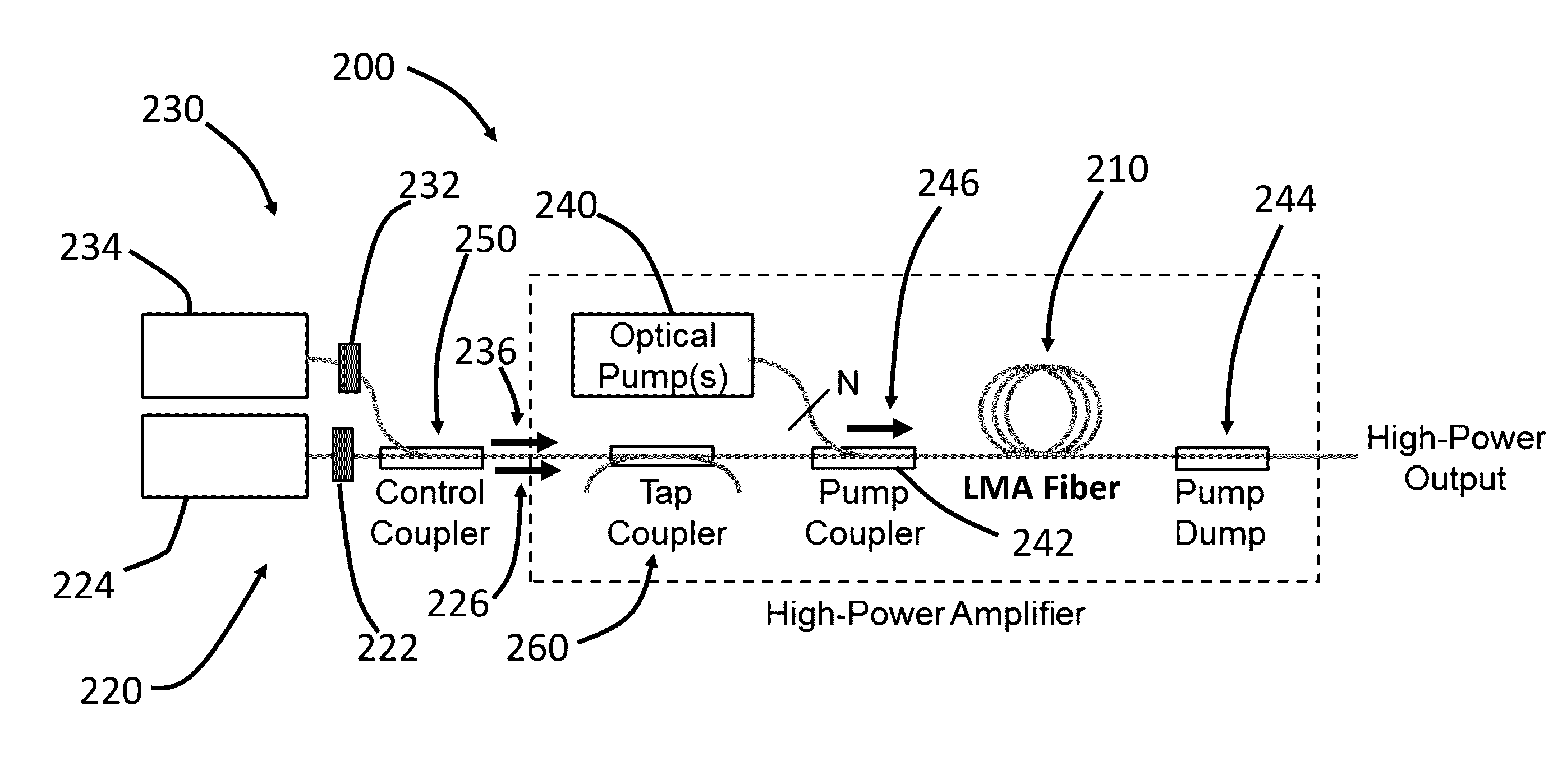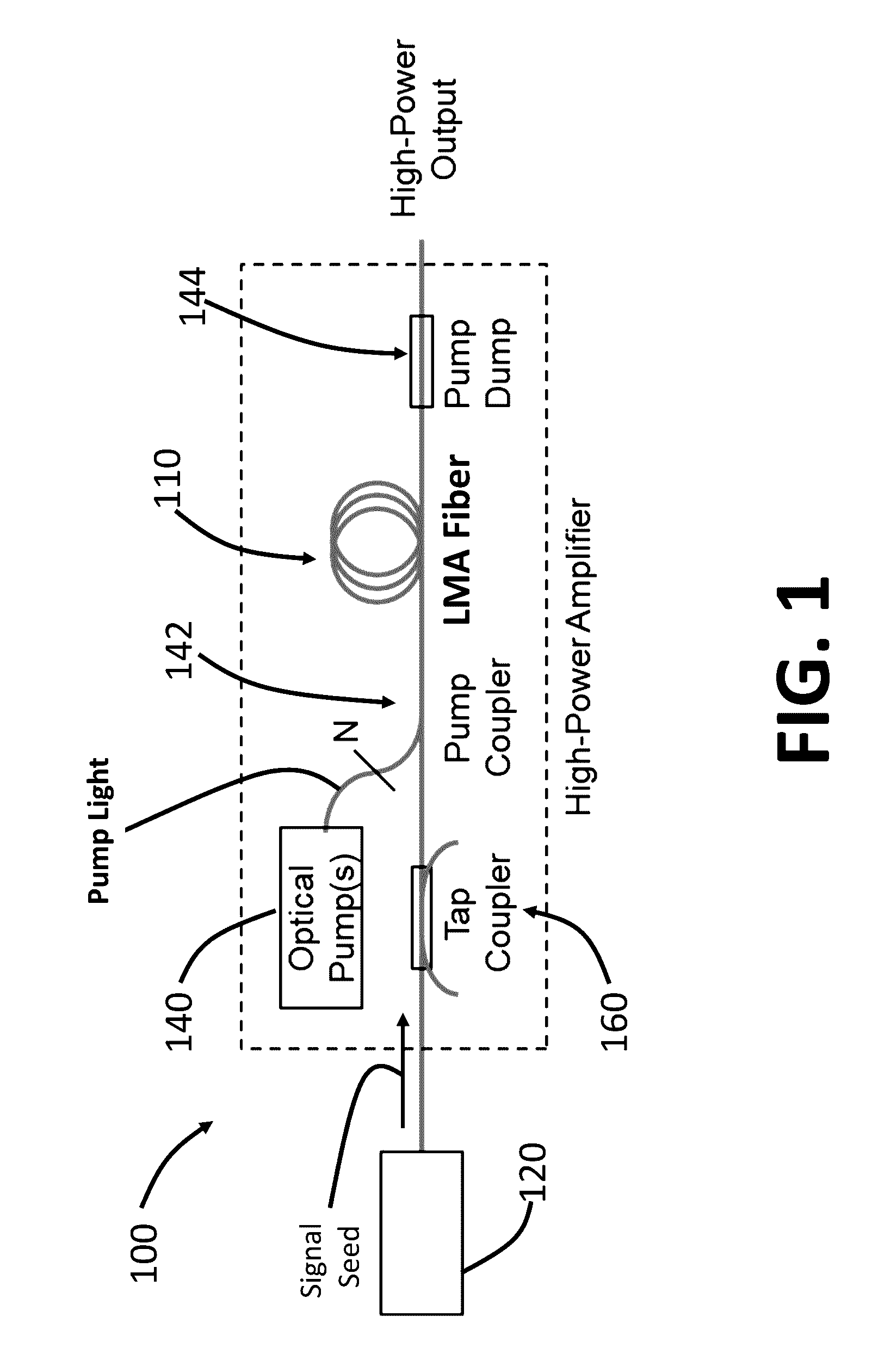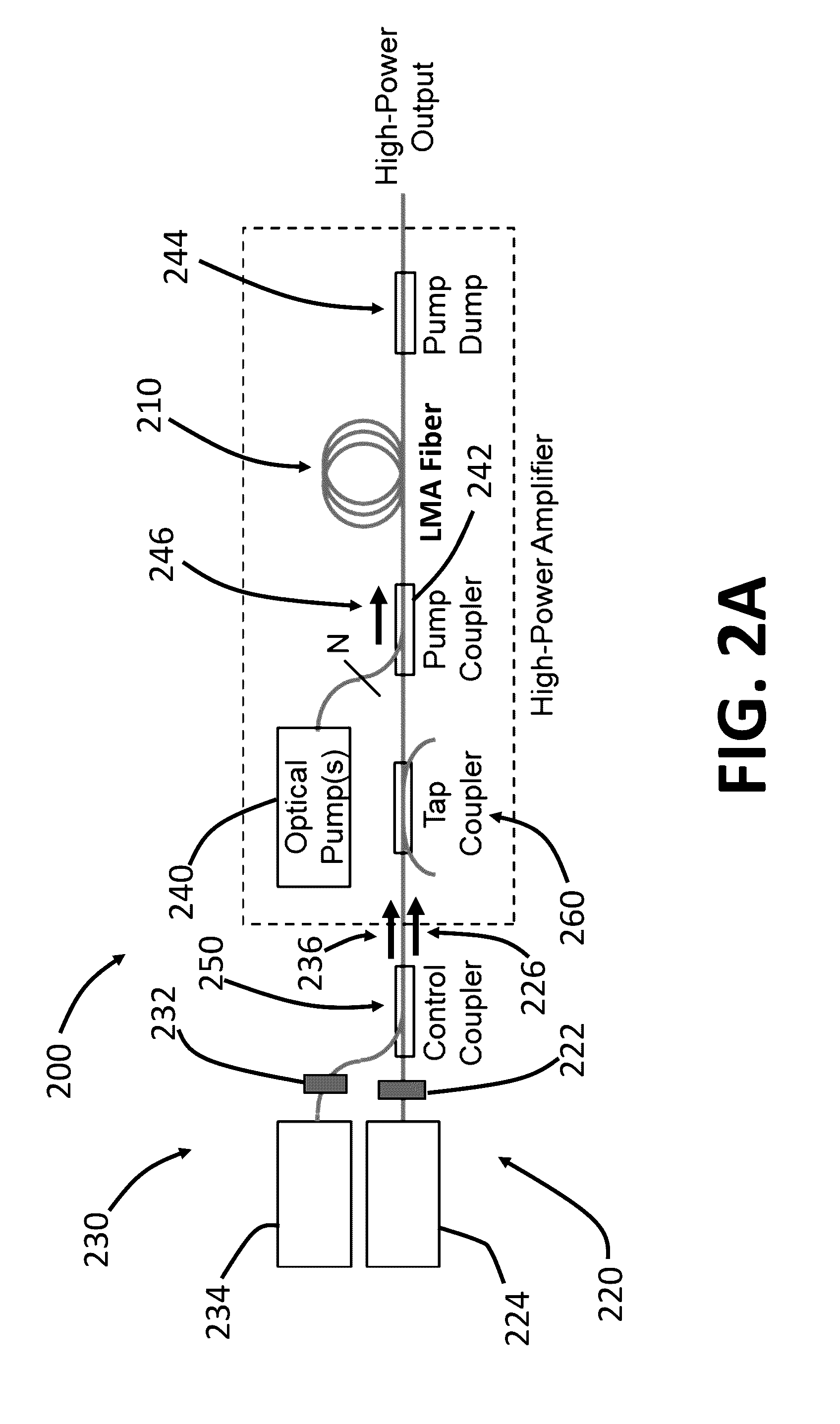Systems and methods for light amplification
a technology of light amplification and system, applied in the direction of active medium shape and construction, laser details, active medium materials, etc., can solve the problems of inability to achieve the desired effect of reducing the peak rate of heat deposition
- Summary
- Abstract
- Description
- Claims
- Application Information
AI Technical Summary
Benefits of technology
Problems solved by technology
Method used
Image
Examples
Embodiment Construction
[0024]Overview
[0025]FIG. 1 shows a typical optical system 100 of a high-power Yb-doped large-mode-area (LMA) fiber amplifier. The system 100 includes a LMA gain fiber 110 within which a signal seed, provided by a signal seed source 120, is amplified. The LMA gain fiber 110 is pumped by a pump source 140 via a pump coupler 142. A pump dump 144 is disposed after the LMA gain fiber 110 to collect pump light that is not absorbed in the LMA fiber 110. A tap coupler 160 is disposed between the signal seed source 120 and the LMA gain fiber 110 to couple out a portion of the seed signal or feedback from the LMA gain fiber 110 for monitoring.
[0026]One issue with conventional LMA fiber amplifiers (e.g., the system 100 shown in FIG. 1) is that LMA fibers normally support not only the fundamental mode (i.e., LP01 mode) of the light being amplified, but also higher-order modes. The presence of higher-order modes can induce multimode instability (MMI), which can limit the useful output power or e...
PUM
 Login to View More
Login to View More Abstract
Description
Claims
Application Information
 Login to View More
Login to View More - R&D
- Intellectual Property
- Life Sciences
- Materials
- Tech Scout
- Unparalleled Data Quality
- Higher Quality Content
- 60% Fewer Hallucinations
Browse by: Latest US Patents, China's latest patents, Technical Efficacy Thesaurus, Application Domain, Technology Topic, Popular Technical Reports.
© 2025 PatSnap. All rights reserved.Legal|Privacy policy|Modern Slavery Act Transparency Statement|Sitemap|About US| Contact US: help@patsnap.com



